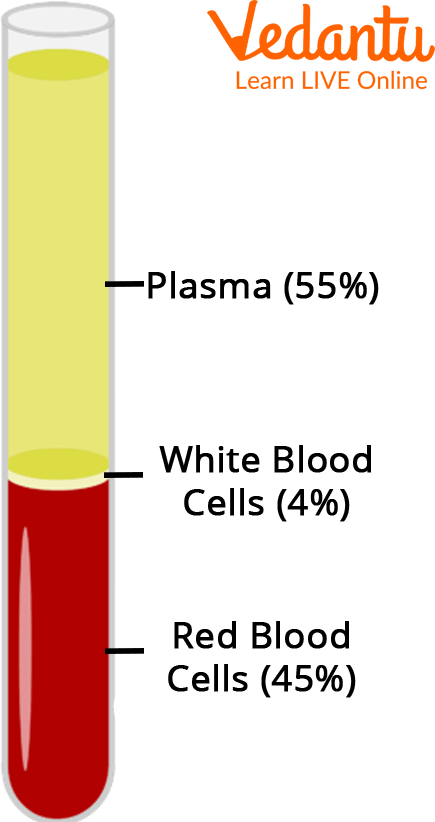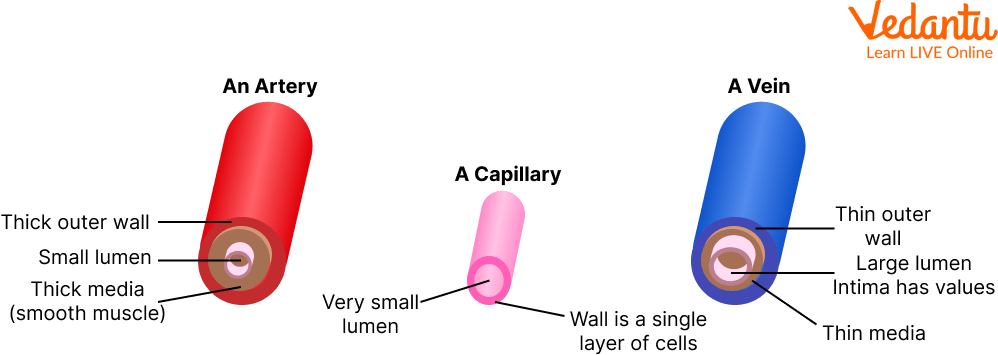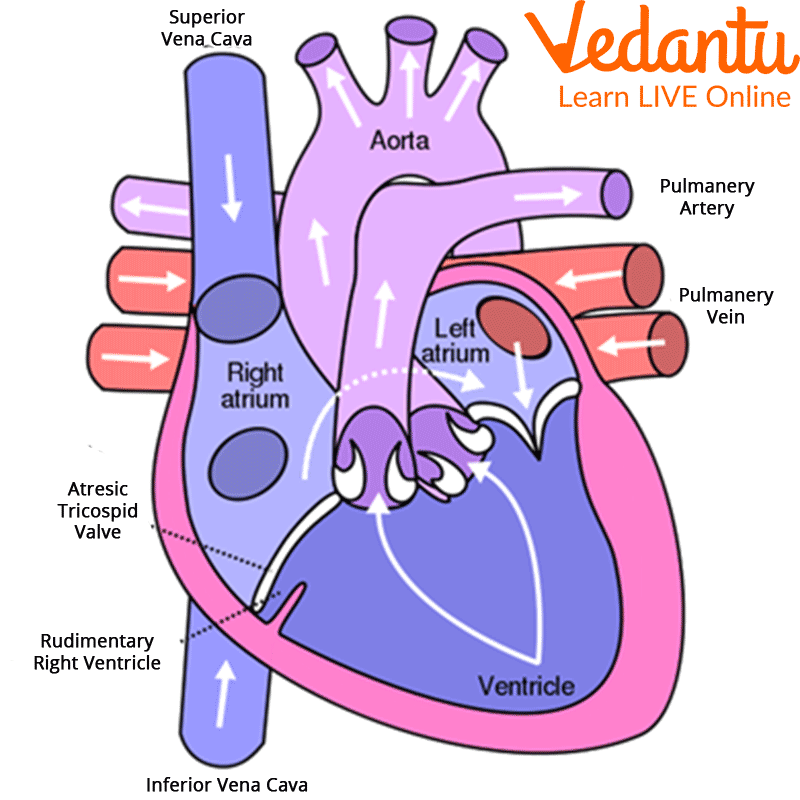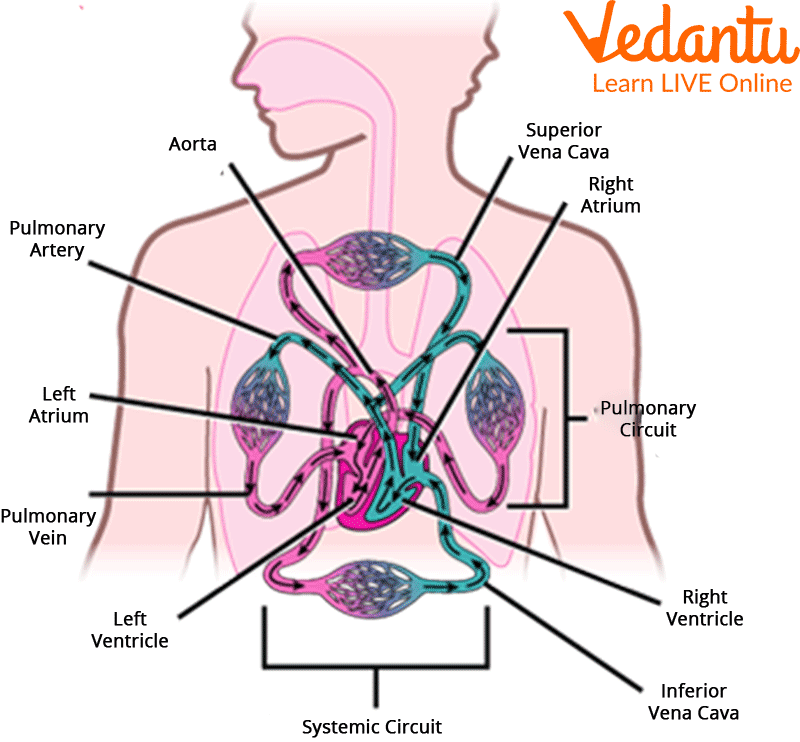




How Does the Circulatory System Help Us Stay Healthy?
Have you ever wondered how nutrients reach other parts of the body from the digestive system? Or how blood is pumped through the body? How does oxygen from the lungs reach all other cells in the body? All of this is possible due to the Circulatory System.
The circulatory system (cardiovascular system) is responsible for the transport of substances - nutrients, oxygen, carbon dioxide, and cellular waste material - throughout the entire body. The primary function of the circulatory system is to transport substances throughout the body via the blood pumped by the heart that flows into the blood vessels.
Three Main Components of the Cardiovascular System
Following are the three main components of the cardiovascular system:
Blood
Blood is a red-coloured liquid pumped by the heart and is responsible for the transport of nutrients and oxygen to all parts of the body and for collecting waste substances from certain organs. It is also responsible for fighting off infections.

The Composition of Blood
Red Blood Cells: These are red due to Haemoglobin. They are responsible for carrying oxygen throughout the body. They are produced in the bone marrow.
White Blood Cells: Also known as “soldiers of the body”. They help fight off infections. These do not have haemoglobin.
Plasma
Plasma is a yellowish fluid that carries nutrients, protein, hormones, and waste products throughout the body. The Blood Cells are also suspended in the plasma.
Blood Vessels
They create a closed system of tunnel-like tubes connecting the heart and body. They carry blood throughout the body.
Types of Blood Vessels:
Arteries - They carry oxygenated blood away from the heart to the rest of the body. As blood flows through them with a lot of pressure, they are thick and strong.
Veins - They carry deoxygenated blood from the body towards the heart. The blood flowing through them does not have a lot of pressure, so the veins are thinner. They contain valves to prevent the backflow of blood.
Capillaries - They are the smallest and the thinnest of all blood vessels. Since they are so thin, they allow easy exchange of material from the vessel to the organ. They are also responsible for connecting the arteries and the veins.

Structure of Arteries, Veins, and Capillaries
Heart Definition for Kids
Heart is made up of special muscles called Cardiac muscles. The heart is responsible for pumping blood throughout the body. It receives carbon dioxide-rich blood from the body and sends it to the lungs. It receives oxygen-rich blood from the lungs and sends it to the rest of the body.
It has 4 chambers - Right Auricle and Right Ventricle, Left Auricle, and Left Ventricle. These are separated by valves that prevent the mixing of blood.
The Deoxygenated blood enters the right-sided Auricle through the Vena Cava vein and is then pushed into the Right Ventricle from where it is carried to the lungs.
Oxygenated blood enters the Left Auricle and is pushed into the Left Ventricle. It is then pushed into the main artery called Aorta. The blood then reaches different parts of the body through smaller arteries.

Heart
Circulatory System for Kids
Circulation refers to the movement of blood and the transport of materials through the blood throughout the body. There are two types of circulation:
Pulmonary Circulation - This refers to the movement of blood between the heart and the lungs only. It is responsible for getting deoxygenated blood from the right ventricle to the lungs where the blood is infused with oxygen and CO2 is released. The oxygenated blood is then sent to the left auricle.
Systemic Circulation - This refers to the movement of blood between the heart and the rest of the body. The body receives oxygenated blood pumped out by the left ventricle of the heart, and all the deoxygenated blood from the body enters the right auricle.

Circulatory System
Interesting Heart Fact for Kids
While veins carry deoxygenated blood only, the Pulmonary vein is the only vein to carry oxygenated blood. It carries blood from the lungs to the left auricle of the heart.
While arteries carry oxygenated blood, the Pulmonary Artery is the only artery to carry deoxygenated blood. It carries blood from the right ventricle of the heart to the lung.
Summary
The circulatory system is vital for kids to understand, as it is responsible for delivering nutrients and oxygen to the body's cells. The cardiovascular system has three main components: the heart, blood vessels, and blood. The heart pumps blood through the vessels, which then carries oxygen and nutrients to the body's cells. Without a properly functioning circulatory system, kids would not be able to grow and develop properly. Understanding how the circulatory system works is important for maintaining good health.
FAQs on Circulatory System for Kids: Definition, Facts & Importance
1. What is the circulatory system in simple terms for kids?
Think of the circulatory system as a super-busy delivery network inside your body. Its main job is to carry important things like oxygen from the air you breathe and nutrients from the food you eat to every single part of your body. It also picks up waste products, like carbon dioxide, and carries them away.
2. What are the three main parts of our circulatory system?
The circulatory system is made of three main parts that work together as a team:
- The Heart: A strong muscle that acts as a powerful pump to push blood around the body.
- Blood: A special liquid that carries oxygen, nutrients, and waste.
- Blood Vessels: A network of tubes (like tiny roads) that carry the blood everywhere. These include arteries, veins, and capillaries.
3. What are the different components of blood and what do they do?
Blood has four main parts, and each has a special job to keep you healthy:
- Red Blood Cells: These are like tiny delivery trucks that carry oxygen all over your body.
- White Blood Cells: These are your body's protectors, fighting off germs and infections to keep you from getting sick.
- Platelets: These are tiny helpers that rush to stop bleeding by forming a clot whenever you get a cut or scrape.
- Plasma: This is the yellowish, watery liquid that carries all these cells, plus nutrients and hormones, throughout your body.
4. What is the difference between arteries and veins?
Arteries and veins are both important types of blood vessels, but they have opposite jobs. Arteries carry oxygen-rich blood away from the heart to the rest of the body. Think 'A' for Away. Veins carry oxygen-poor blood from the body back to the heart so it can be sent to the lungs for more oxygen.
5. Why does my heart beat faster when I run or play?
When you run, jump, or play hard, your muscles need much more oxygen and energy to work. To deliver this extra fuel quickly, your heart automatically starts to pump faster. This pushes more oxygen-rich blood through your blood vessels to your muscles, helping you stay active and strong. It’s a sign that your circulatory system is working perfectly to support your body!
6. What would happen if our blood didn't have platelets?
Platelets are extremely important for healing. If you didn't have them, even a small cut could be a big problem. The bleeding wouldn't stop easily because there would be nothing to form a blood clot, which acts like a plug to seal the broken blood vessel. This would mean you could lose a lot of blood from a minor injury.
7. How is the circulatory system like a delivery service for your body?
This is a great way to understand it! The circulatory system works just like a city's delivery service:
- The heart is the main post office or warehouse, pumping out all the packages.
- The blood vessels (arteries and veins) are the roads and highways.
- The blood acts as the delivery trucks, carrying packages of oxygen and food to all the houses (your body's cells).
- The trucks then pick up the garbage (waste products) from the houses and take it away to be disposed of.









